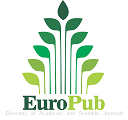Bone Distribution in Commercial Cuts of Local Sheep Carcasses Given Indigofera Flour with Different Rearing System
Abstract
This study aims to evaluate bone distribution in commercial cuts of local sheep carcasses fed indigofera flour, taking into account differences in rearing systems. This study used 20 local female sheep aged 1 year with an average initial weight of around 18.3 ± 2.01 kilograms. These sheep were reared for 4 months with two types of rearing systems, namely intensive and semi-intensive. Indigofera flour and commercial concentrate were given at 07.00 in the morning, and at 11.00 grass were given in a ratio of 40:60%. This research used four different treatments, namely five sheeps that were reared semi-intensively by feeding commercial concentrates (P1SI), five sheeps were reared semi-intensively by feeding indigofera flour (P2I), five sheeps were reared intensively by feeding commercial concentrate and grass (P1SI), and five sheeps housed with indigofera flour and grass (P2I). This study used a completely randomized design with a 2x2 factorial pattern and 5 replications, and initial weight as a correction factor. The results of the study showed that sheep fed indigofera flour had a lower bone weight in commercial carcass cuts than sheep fed commercial concentrate. However, with a semi-intensive rearing system, sheep bone weight does not appear to be different.















